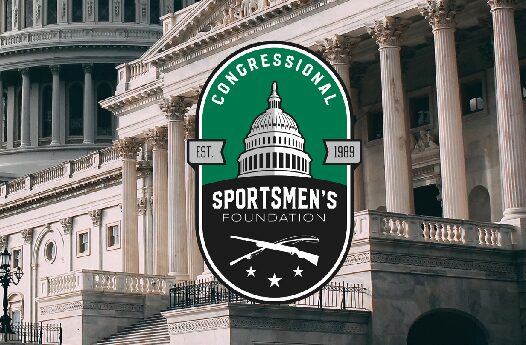THE RISE OF THE IBFH

he epiphany, such as it was, came to me while thumbing through the pages of an old Field & Stream from 1960, reading the work of two of the undisputed giants of upland literature, Corey Ford and Robert Ruark. I’m speaking, of course, of Ford’s “The Lower Forty” column, and Ruark’s “The Old Man and the Boy” column that would someday become the revered book of the same name.
You’d be hard-pressed to find two more beloved and iconic literary outdoor writers than those two. And deservedly so. In my bookcase I have copies of virtually every book Ruark penned, as well as three collections of Ford’s writing. So count me among the fanboys (and yes, there’s a bit of foreshadowing there).
But my epiphany had nothing to do with their talent as writers or their standing in the pantheon of great outdoors literature. Rather, it was regret that writers of their immense talent came to us at a time in our history when the literature of outdoor sports, and hunting in particular, kept women in clearly labeled caricature boxes: “Doting Housewife,” “Doll-Playing Little Girl,”or “Wholesome Girl Next Door” and so on.
But what you never saw in the sporting literature of that time and age, were any of those boxes labeled “female hunter.”
Instead, what you saw in 1960 in Field & Stream, from two of the finest, most nuanced outdoor writers ever to meld ink with paper, was the gender equivalent of the one-dimensional character sketch: Ford writing a humor column about the “Ladies Auxiliary” of the famous Lower Forty club, sitting around the beauty parlor knitting and gossiping about their men. Or Ruark, ending an otherwise poignant “The Old Man and the Boy” column with a paragraph that turns the story’s lone female mention into a mildly leering observation on beauty.
I don’t criticize Ford or Ruark, or any of the other great male writers of that generation. They were products of their time and culture. But I often wonder what they might have written if only they had had the opportunity to hunt with some of the women I’ve had the opportunity to hunt with over the past few years.
I don’t know what these two traditional male writers would think of our decidedly “non-traditional” hunting world of today, but I can assure you their depictions of female characters wouldn’t include beauty parlors, knitting, gossiping, apron strings, or any other sexist cultural artifacts of the “Mad Men” era. That world is gone, thankfully. We are now living in the age of the Independent Badass Female Hunter, or IBFH, as I like to call them, and we’re all the better for it. Men included.
Like many men of a certain age – I’m 49 – I grew up in the very tail end of Ford and Ruark’s culture, where the depictions of hunters and hunting were in overwhelmingly male terms. Coming of age in the 80s, I knew – at least in an abstract, theoretical way, because I sure never met one – there were female hunters out there, somewhere. But they may as well have inhabited the world of cryptozoology for all the contact I had with them. As far as my young life was concerned at the time, hunting was for the dudes.
As a result, for the first 47 years of my life, I never hunted with a woman, not once. Imagine that: Half the world’s population, and I never shared a field, a blind, or even a conversation about hunting with a single one of them. And I’d be willing to bet my membership card in the International Man’s Club that, even today, I am the rule, not the exception.
Despite that, I never bought into the traditional narrative of a woman’s role, because I wasn’t brought up believing it. My maternal grandmother was widowed at age 26. She raised three young children, alone, at a time when the only jobs available to most women paid, in her words, “doodly-squat.” She did it, anyway, through sheer force of will.
I in turn was raised by single mother who had to juggle a full-time job while trying to bring up two boys alone, on a secretary’s salary, which paid about as much doodly-squat as her mother’s salary did some 30 years before. Imagine that. She did it, anyway, through sheer force of will.
So strong women role models are nothing new to me. I’ve been surrounded by them my entire life. However, while those strong women role models in my life refused to be put into the caricature boxes society had crafted for them, the demands of life still denied them, as those demands still deny many women, entry into boxes they may have wanted to try but were never afforded the opportunity.
When I wanted to go quail hunting as a child, I wasn’t taken by a wise, kindly, paternal father figure who dispensed pithy life lessons as we walked behind a good dog. I was dropped off somewhere – dogless, with a Christmas present shotgun that had bitten deeply into a secretary’s salary – by a young, overworked, underpaid single mother who didn’t understand but still tried her best to accommodate and encourage her young son’s burning obsession with hunting and fishing.
She would always wave goodbye. I’d wave back as I watched her car drive off, then turn back toward the fields, the fencerows, and my burgeoning fascination with the bird I had read about in so many of those magazine stories.
And for the first four decades of my life, that was my sole association between women and hunting: a wave and a goodbye as I turned to go hunt with other men, or most often, alone, seeking birds and solace and answers in the only way I knew how.
Almost all change comes incrementally rather than all at once. Most of us only think it happens suddenly because we didn’t notice it creeping up on us. One day we wake up, look around, and discover the solid, familiar ground upon which we previously stood has now shifted, often tectonically.
For me – a man who grew up the beneficiary of strong, independent female role models, but who ironically had never seen those female role models in the field, carrying a shotgun – that tectonic shift came the day I was hired by Quail Forever.
One moment, I was simply a dude who thought women bird hunters something of a novelty. The next moment, I was part of an organization teeming with women who could outhunt me, outshoot me, outwalk me, and outwork me, and do it all without needing one iota of assistance from the testosterone side of the gender aisle, and with nary a beauty parlor or apron string in sight.
It was a revelation, and a revolution, at least in my eyes. Here, finally, was the living, breathing refutation and rejection of those tired, old caricature boxes that women had been living in for so many years. Here, finally, and apparently suddenly, was the emergence of the independent badass woman hunter, equals – and often betters – to the male-driven narratives upon which so much of hunting culture was – and in too many ways still is – based upon.
The truth, of course, is that this societal and cultural change did not happen overnight. It took a helluva lot of hard work from a helluva lot of women who weren’t afraid to fight the often-strong headwinds of the status quo.
And it is still very much a work in progress. There are still barriers and attitudes and cultural stereotypes to overcome. But I also believe most men in the hunting community are exactly how I was prior to working with – and hunting with – women who share the same passion for this world that I do. There is no X or Y chromosome that exclusively defines that, just a gender-neutral love for what moves the soul.
I’ve been here for going on three years now, and a lot has changed, both personally and in the larger upland world, in that time. The early middle-aged dude who had never hunted with the opposite sex now counts a woman as one of his closest and dearest hunting partners.
And it’s not just change on the individual level, either. Quail Forever has always been about community, and within that community there is a recognition and a need to provide a space where all are welcome, so our organization now has a program dedicated to women, the Women on the Wing initiative, formed in response to the growing interest and engagement among women conservationists across the country.
And much like the grassroots model of the organization, Women on the Wing grew from the ground up, existing long before in the hearts and intentions of staff members across the country, and continues to grow with volunteers, landowners, farmers, ranchers and hunter-conservationists as they carry on that inspiration for more women to find their path within the uplands and conservation. It’s a program that recognizes and values the trailblazing women who came before, those who are setting the stage for women today, and those who are carving a clear path for the young leaders of tomorrow.
And it’s working, if social media is any indication, because there are more young, dedicated, hard-core female bird hunters out there than ever before rejecting gender boxes and making their own narrative.
It’s a far cry from the yellowed, musty, 60-year-old pages of that ancient Field & Stream, and it’s a change I think Ford and Ruark – given the opportunity – ultimately would have appreciated, and probably found quite amusing.
I think about my grandmother a lot these days. She was an adventurous soul whom I think would have made one hell of an independent badass female hunter, but she never got the chance. Thankfully, someday, one of her great-great granddaughters will.
Imagine that.
THIS STORY ORIGINALLY APPEARED IN THE WINTER 2021 ISSUE OF QUAIL FOREVER JOURNAL. IF YOU ENJOYED IT AND WOULD LIKE TO READ MORE STORIES LIKE IT, BECOME A QUAIL FOREVER MEMBER TODAY!
SHARE ON
You may also like
The role corn plays for gamebirds and economies ac...
Sportsmen’s conservation policy issues from publ...
Sportsmen’s conservation policy issues from publ...


























